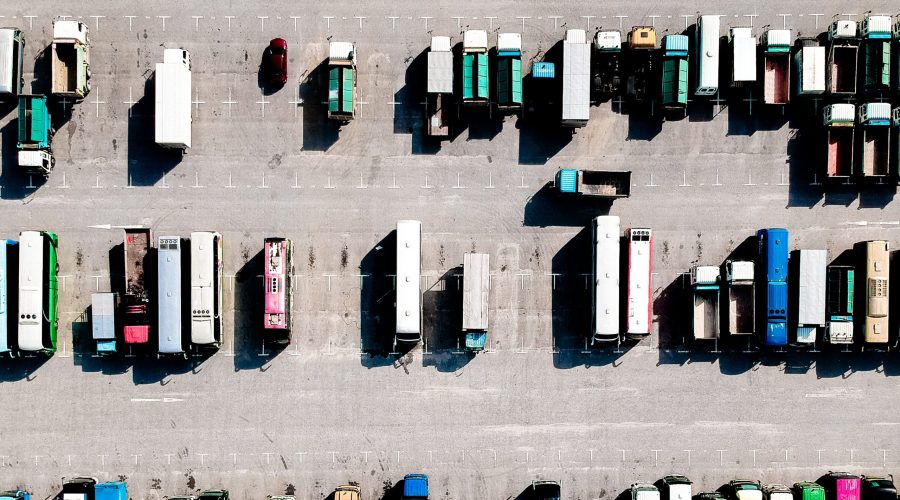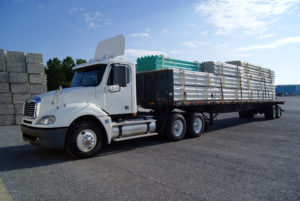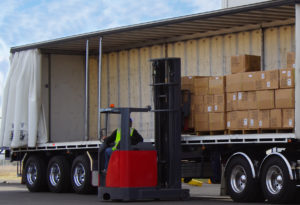
Guide to Road Haulage Vehicles
When it comes to haulage, it’s essential to use a lorry or trailer that’s suitable for the job. But with a wide variety of types available, it’s not always easy to know which is most likely to meet your requirements.
This handy guide to road haulage vehicles gives you a rundown of the most common forms of heavy goods vehicles (HGVs), larger goods vehicles (LGVs) and trailers, with details on everything from dimensions to suitable cargo.
Jump to:
- Articulated Lorries (Artics)
- Rigid Lorries
- Emergency Vehicles
- Livestock Trucks
- Refrigerated Trucks
- Specialist Vehicles
- Flatbed Lorries
- Tankers
- Box Trailers
- Tilt Trailers
- Curtain Trailers
- Mega Trailers
- Open Trailers
- Reefer Trailers
- Tarpaulin Trailers
- Road Train
- Swap-Body System
- Low Loaders
Common Types of HGV & LGV
Articulated Lorries (Artics)
Mostly used to deliver dry goods and consumer goods – including everything from clothes and jewellery to non-liquid foods such as tea and sugar – articulated lorries are the most commonly used in the United Kingdom, with a maximum length of 16.5m and a maximum fully-laden vehicle weight of 44 tonnes.
Rigid Lorries
Smaller than articulated lorries with a load capacity of 26 tonnes, rigid lorries are often recommended for novice HGV drivers as they drive similarly to cars – providing an easy starting point before moving onto larger vehicles. As they are usually rear-only access, rigid lorries are most suited to commercial deliveries.
Emergency Vehicles
Although you might think they are a category of vehicle in their own right, emergency vehicles such as fire engines are considered LGVs due to their size, and require special training to operate. Fire engines in this country tend to weigh 12 tonnes or more, and are 7.7m in length, usually carrying specialist fire safety equipment.

Livestock Trucks
As the name suggests, livestock trucks usually carry live animals – most commonly cows, pigs, sheep or chickens in the UK. Livestock trucks are limited to a height of 4.6m and a width of 2.5m, and must be designed to protect the animals from injury, inclement weather and excessive noise and vibration.
Refrigerated Trucks
Refrigerated trucks are used to carry frozen and chilled goods, most commonly food and drink which needs to be kept fresh during transfer from warehouse to shop. Fitted with cooling apparatus to maintain a low temperature, refrigerated trucks are permitted a maximum weight of 44 tonnes and a width of 2.6m to allow for the extra thickness of the insulation. A maximum length of 4.95m is advised, although there is no legal limit.
Specialist Vehicles
Some HGVs/LGVs are considered specialist vehicles as they have a particular use – for example tow trucks or snow ploughs. Regulations vary depending on the vehicle – snow ploughs have no set size restrictions (although they must adhere to safety regulations) while tow trucks are permitted a maximum trailer width of 2.55m and a length of 7m.
Flatbed Lorries
Designed to protect large, heavy items from the elements, flatbed lorries are often used by the construction industry, carrying bulky equipment and building materials from site to site, and usually strap their cargo in place to prevent damage. Flatbed lorries are limited to a weight of 40 tonnes and must have no individual truck longer than 12m, while the maximum total length of a combined articulated truck and trailer is 16.5m.

Tankers
Usually employed to carry liquids or fine materials such as salt and sugar, tankers are best known for transporting fuel to petrol stations. As well as the standard size and weight restrictions – no more than 44 tonnes for a six-axle vehicle – tankers must be clearly labelled if the vehicle’s contents are toxic or flammable, and drivers require a specialist licence.
Common Trailer Types
Box Trailers
Box trailers are often used to transport expensive cargo as they offer excellent security due to their rigid walls, while back-door loading makes it easier to load and unload cargo. Although dimensions and capacity can vary depending on the model, box trailers usually have a width of around 2.45m, a length of 13.6m and a load weight capacity of 22 tonnes.
Tilt Trailers
Sometimes known as Euro trailers, tilt trailers are specially designed to make tying the cargo down easy – particularly important when transporting hazardous cargo. Tilt trailers can carry a payload of up to 32.3 tonnes and can be up to 13.6m in length, with a width of up to 2.5m.
Curtain Trailers
Curtain trailers have a similar design to box trailers, but instead of back-door loading, cargo can be moved on and off via the sides, which comprise of movable curtains. These trailers can usually be transported via train as well as HGV, and have a length of 13.6m, a width of 2.5m and a load capacity of 32.8 tonnes.

Mega Trailers
With the same movable curtains as a curtain trailer and an additional movable top cover, the main feature of a mega trailer is its increased height of almost 3m, which allows it to ship taller or bulkier items. Despite the name, mega trailers have the same load capacity (32.8 tonnes) and length (13.6m) as box and curtain trailers.
Open Trailers
Unlike many other types of trailer, open trailers have no sides or roof (although temporary ones can be added). This means that, with the appropriate ties, the trailer can carry cargo which is taller or wider than other trailers will allow – although this is still subject to safety regulations. Open trailers are available up to 13.6m in length and can carry up to 25 tonnes.
Reefer Trailers
Reefer trailers are mostly used for fresh food such as fruit and vegetables, and are specially designed to keep the inside of the trailer at an appropriate temperature to ensure the produce remains fresh. They have a load capacity of 31 tonnes, a length of 13.3m and a width of 2.5m.
Tarpaulin Trailers
Ideal for securing valuable goods on long or bumpy drives, tarpaulin trailers boast sides made from strong aluminium – particularly important if you are transporting dangerous cargo – while the tarpaulin covers protect the cargo from the elements. These trailers can stretch up to 13.6m in length, 2.5m in width and have a load capacity of up to 32.3 tonnes.
Road Train
Made up of one cargo-carrying vehicle at the front pulling a separate cargo-carrying trailer behind, road trains are ideal for transporting high volumes of cargo. These road trains can be up to 15.4m in length and usually carry a weight of up to 23.5 tonnes, while the trailers are generally of the box or curtain variety.
Swap-Body System
Swap bodies are interchangeable containers designed to be transported via road or rail and exchanged quickly for minimum downtime. Larger than most other containers and with added security, swap bodies are generally used to transport large or valuable cargo and come in three length categories, from 7.15m (maximum capacity 16 tonnes) to 13.6m (maximum capacity 34 tonnes).
Low-Loaders
Designed for transporting heavy cargo such as industrial machinery, low-loaders are set low to the ground to allow for easy loading and unloading of cargo. With no sides or roof shipments do need to be protected from inclement weather, while low-loaders are available in a wide variety of sizes and weight capacities.
At Waller Transport, we can access almost any type of vehicle or trailer through our extensive partner network. We take pride in finding the very best solution for every client, so whatever your haulage needs, please get in touch to find out how we can help.
